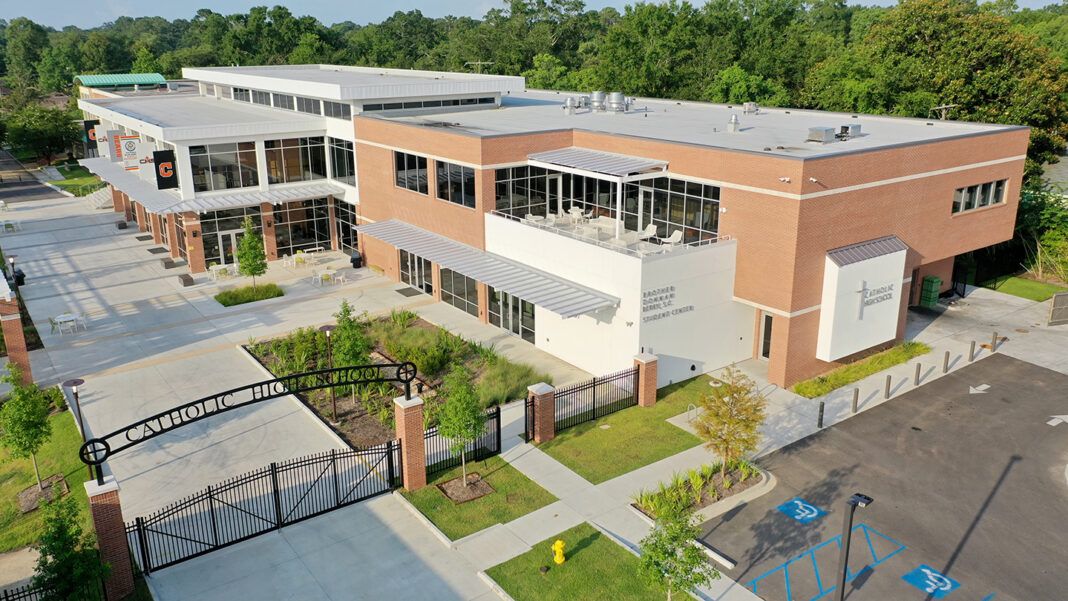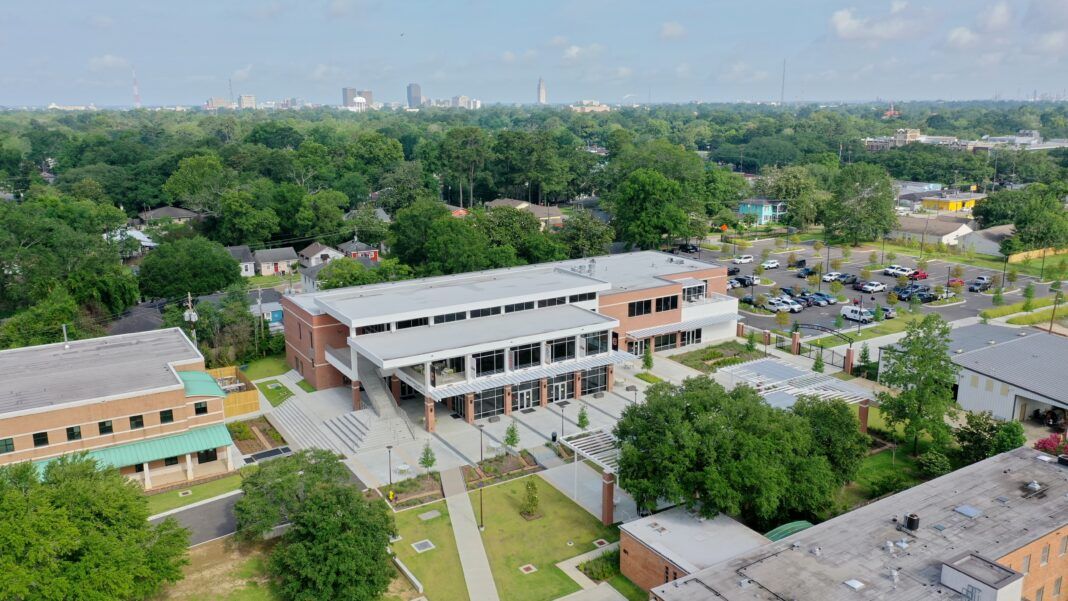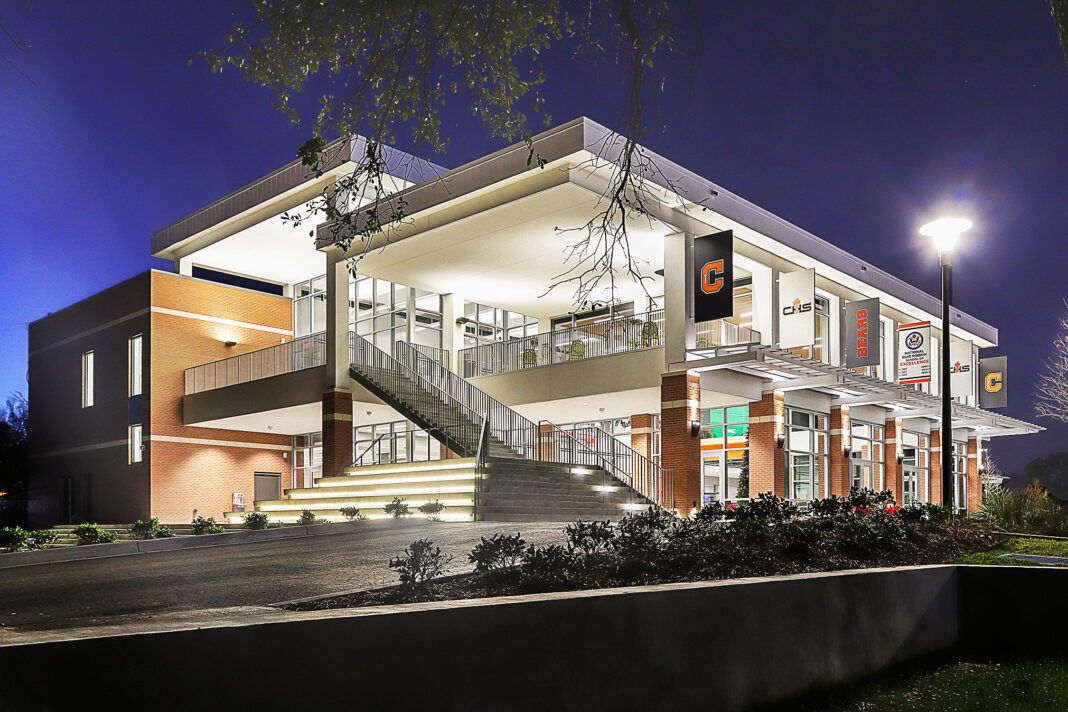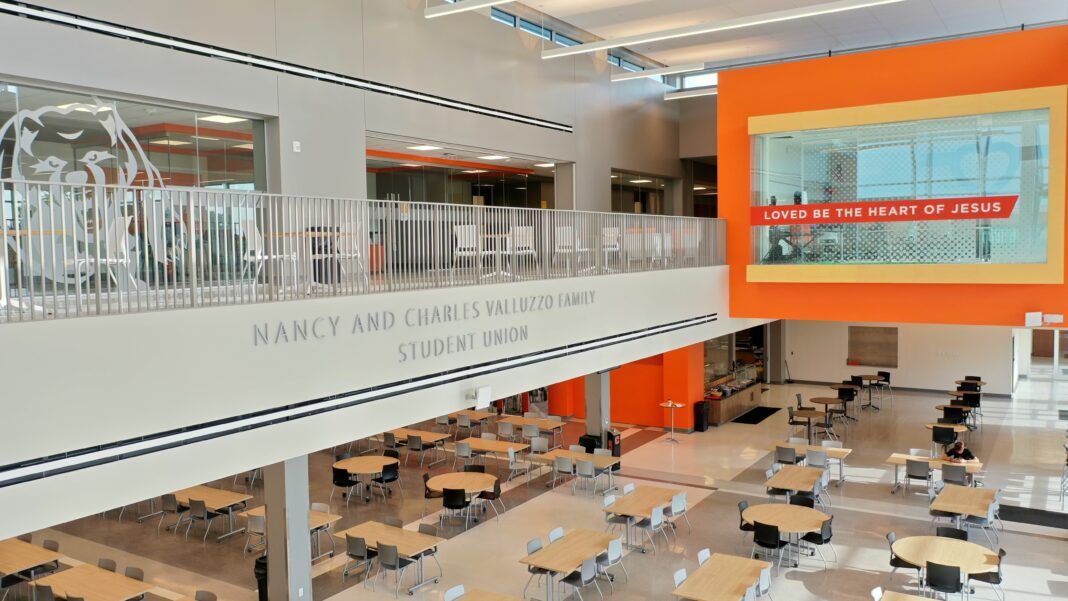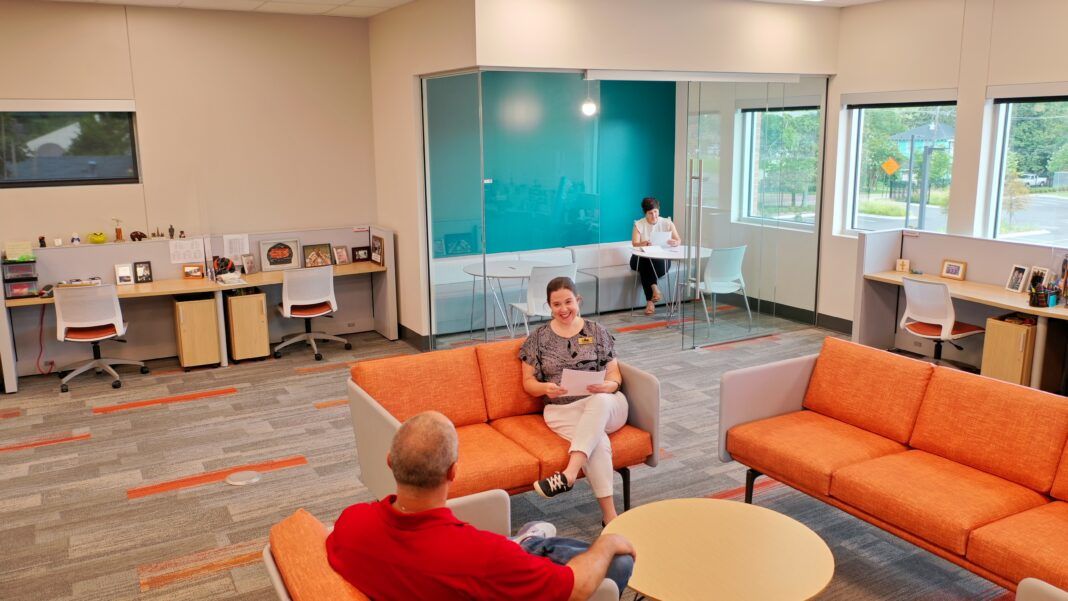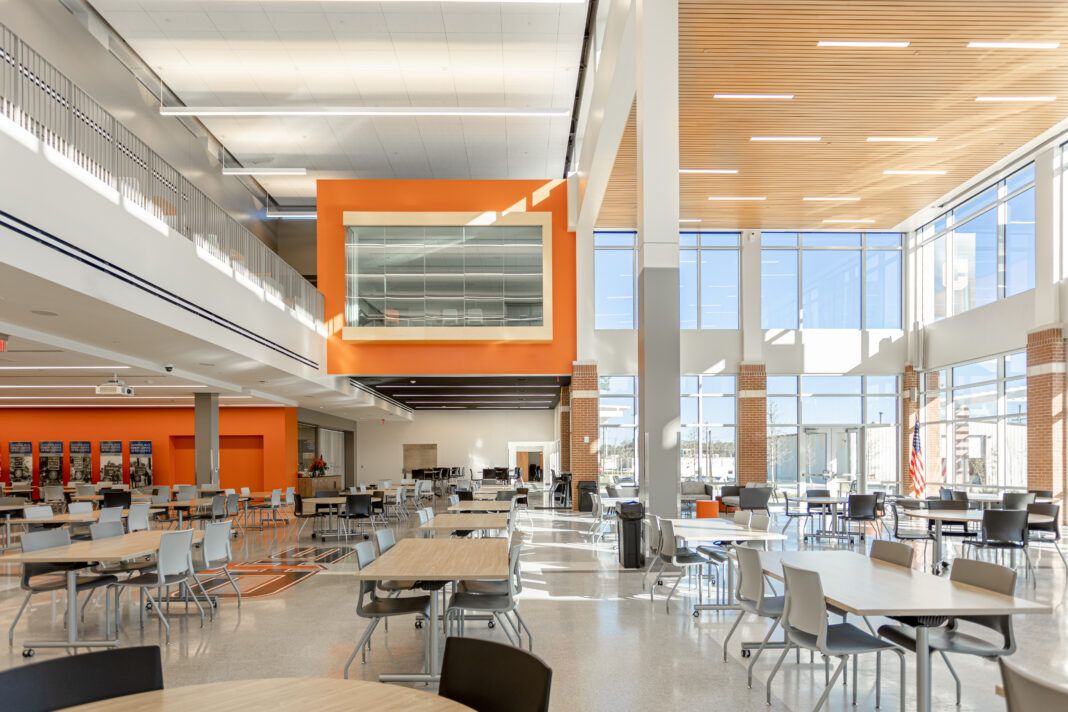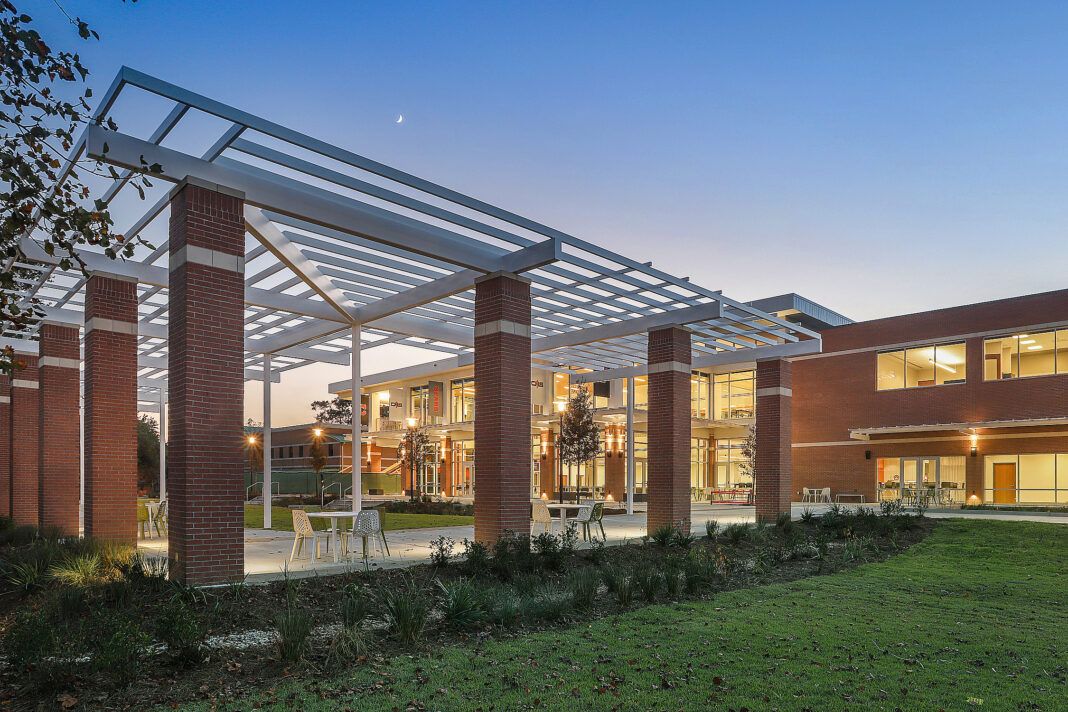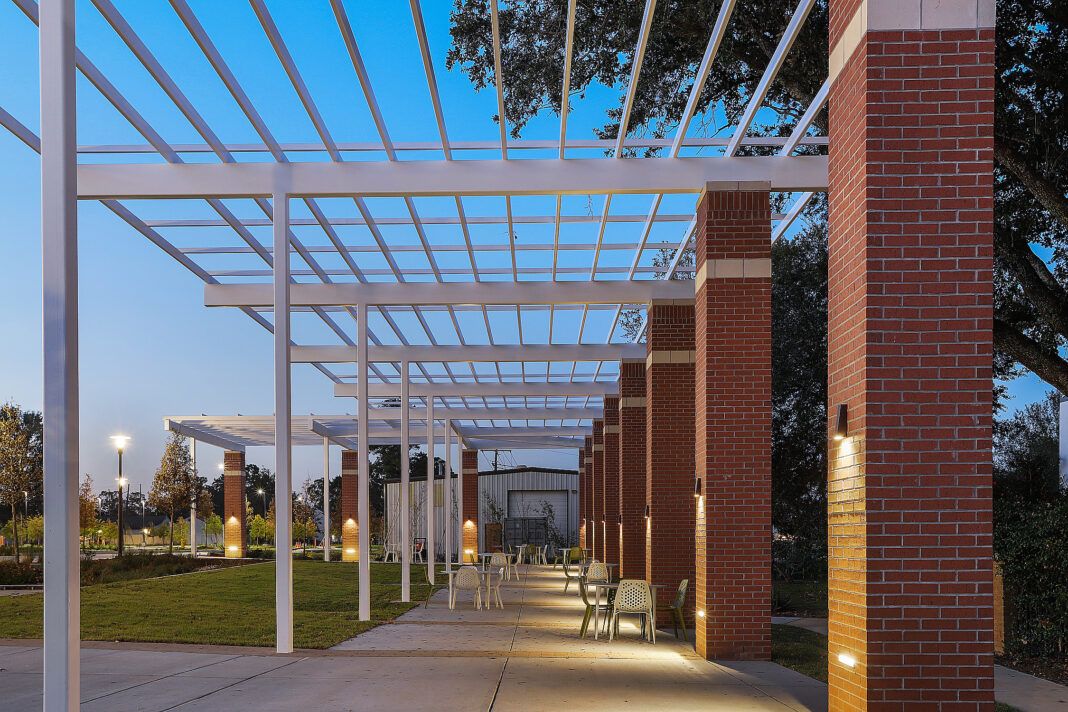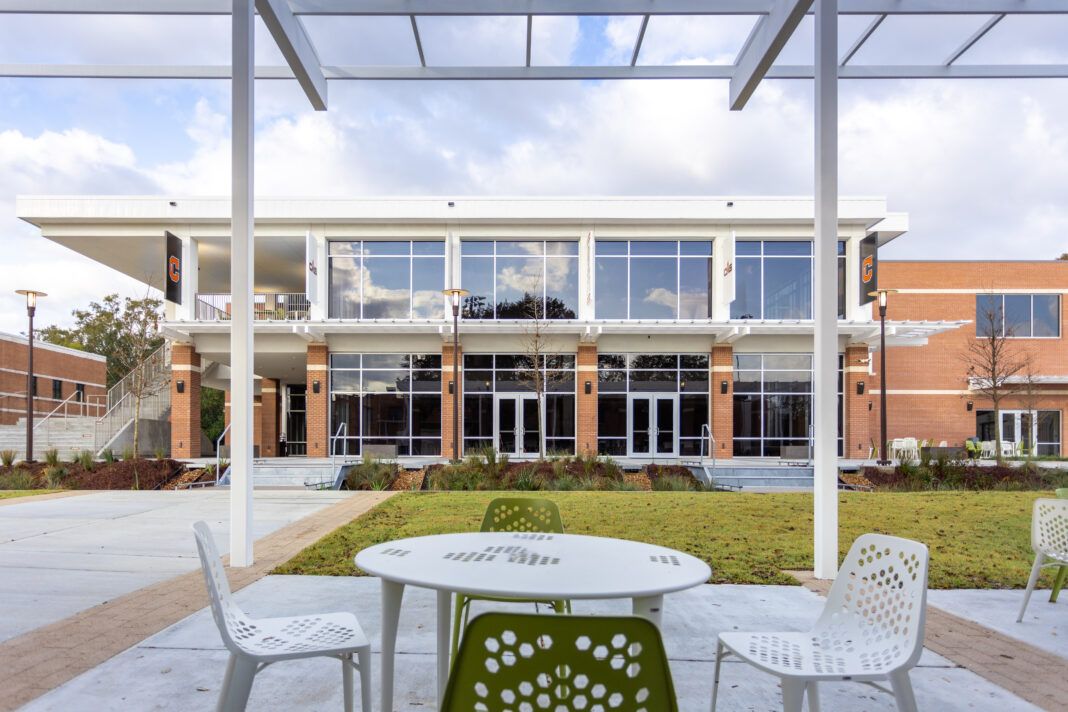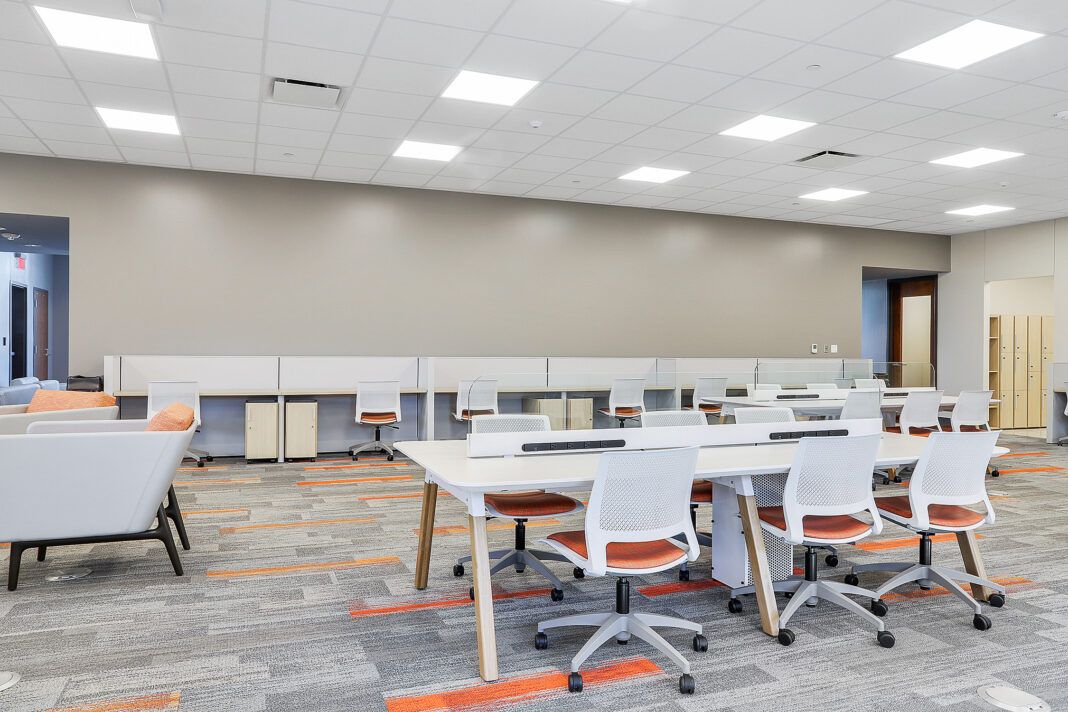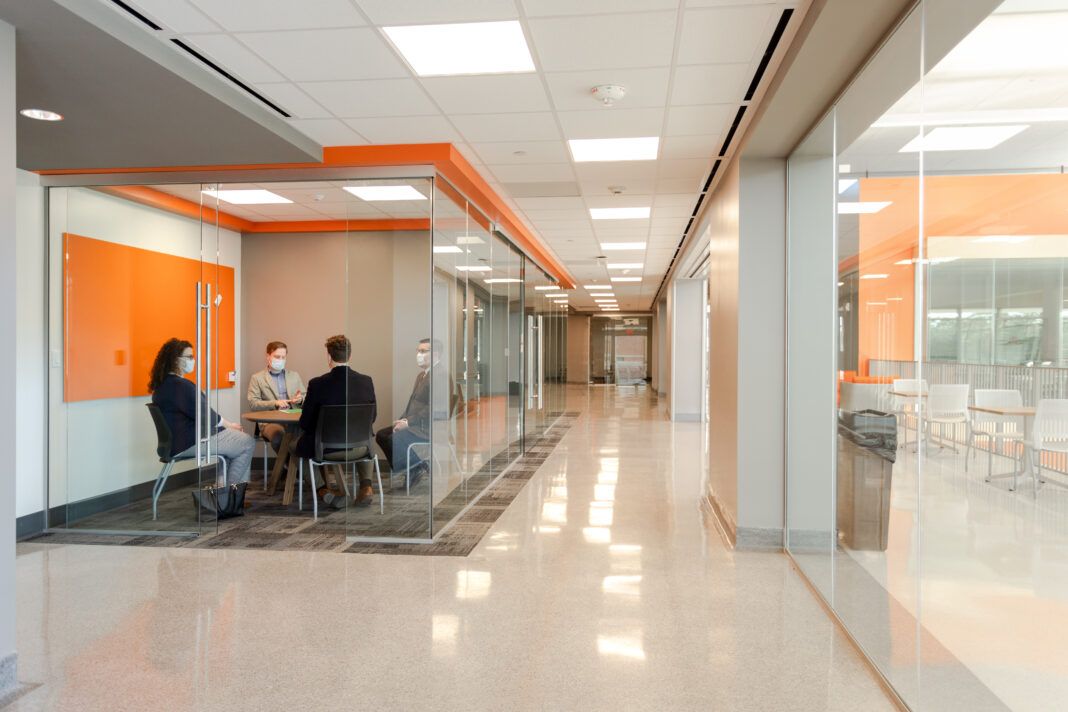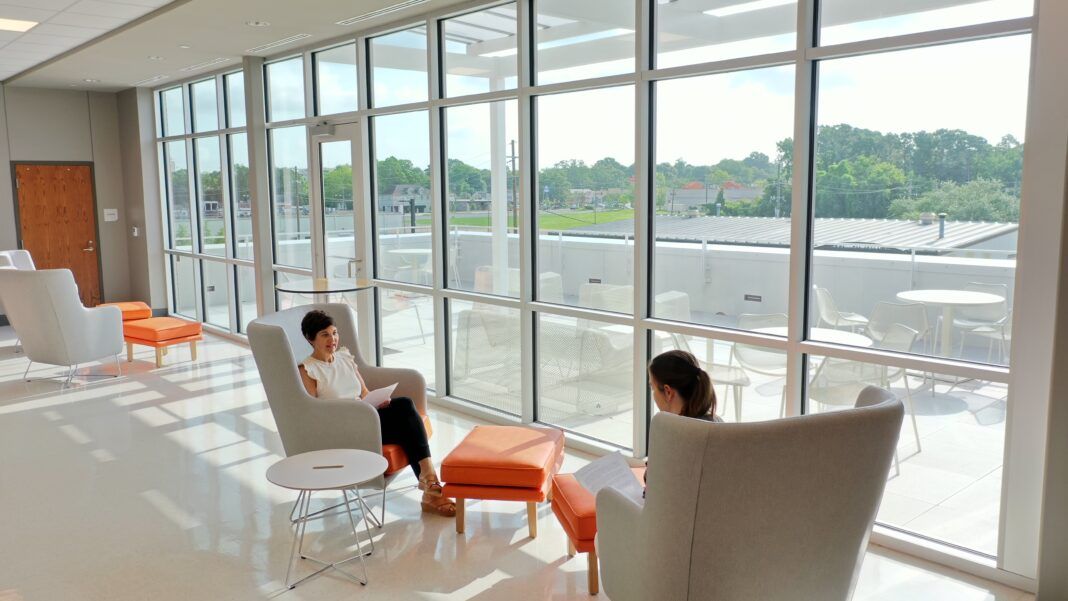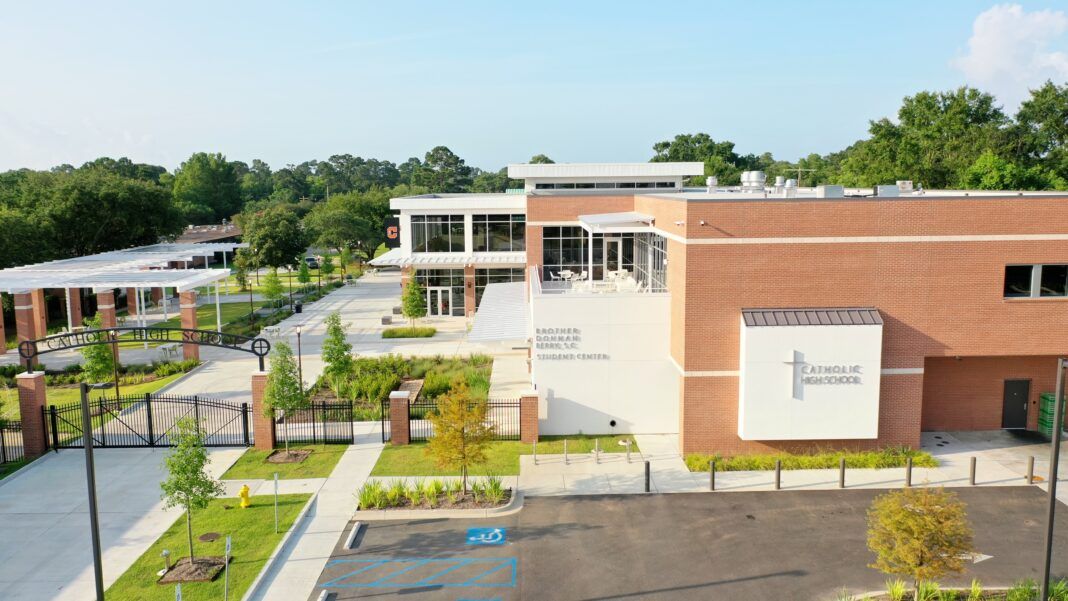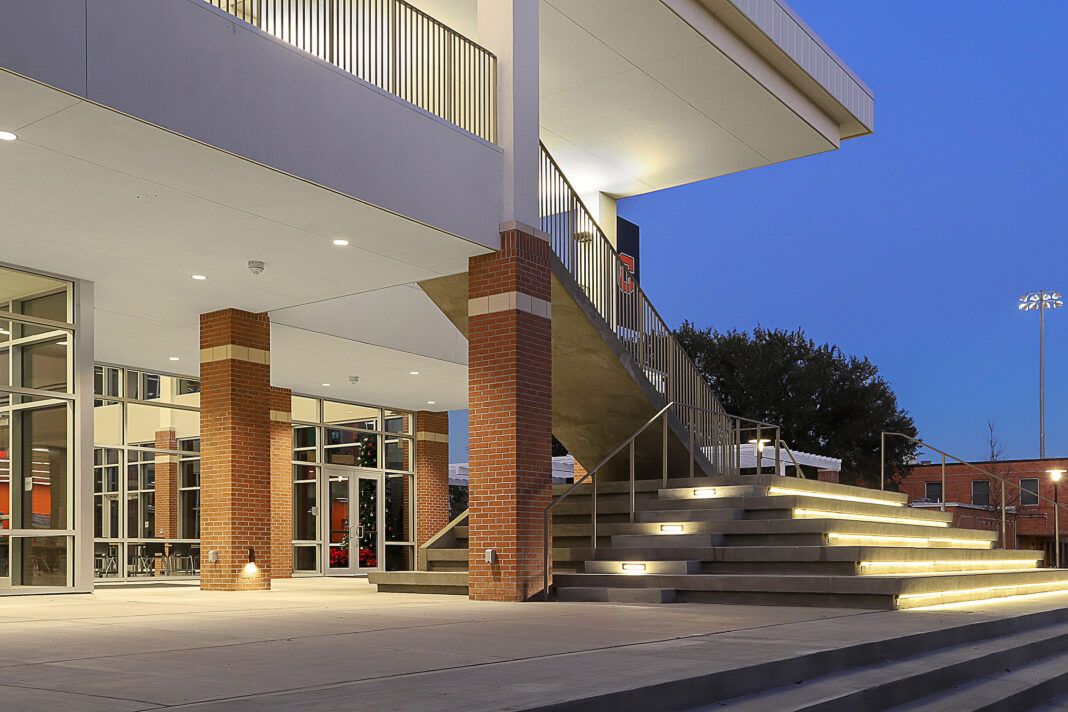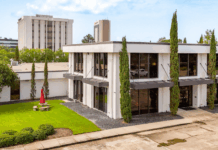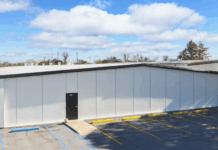This series about the 2021 American Institute of Architects Rose Awards
highlights award-winning architecture in Louisiana.
—

Tipton Associates/Ritter Maher Architects
Catholic High School Brother Donnan Berry Student Center
CATEGORY: Architecture
At this college preparatory school, the new Student Center is the first construction in nearly two decades and the first chapter of a revised master plan.
The 33,000-square-foot facility not only activates the historic school’s next era but also provides rich educational, spiritual and social experiences across two floors of dining, classrooms, campus ministry, and a faculty hub.
Designed to be a Campus Heart, the Student Center moves dining and leisure from the far edges to the new core. The Student Commons comprises the Student Center, rain gardens, social stair, outdoor pavilion and a future Learning Commons; it punctuates a newly created campus quadrangle formed with existing buildings.
The project budget accommodates a re-design and re-installation of a new 500-ton central plant, with space tonnage to grow as the campus grows in coming years. As a campus destination, the new hub is an expansive and flexible space that can house not only students and faculty but the larger school community beyond school hours.
WHAT THE CATHOLIC HIGH SCHOOL ADMINISTRATION SAYS
“The Student Center is the heart of our community. The beautifully spacious and light-filled
first floor area promotes interaction among students and faculty in a relaxed setting. The second-floor classrooms and work centers inspire the commitment to excellence for which our school is well known.”
Since 1890, this private school has educated young men, fostering academic excellence and inspiring gospel values.
The Mid City campus has not seen new construction in more than a decade. The new Student Center replaces the existing “Union” designed for a student population of 450. The owner wished to recreate the same social atmosphere the former Union captured along with an active corresponding outdoor space. As the school has a strong presence with alumni and the community, creating a facility that could flex from day to night was vital.
This new gateway creates a refined sense of arrival on a corner of campus that once was an afterthought. A large new parking area allows for more hosting of after-hours activities, further activating the students’ legacy culture and desire to give back to its community.
The adjacent courtyard of the old Student Union had proven a popular hangout. Here the pavilion centers the greenspace. The pavilion’s eleven brick columns reinforce both the figurative and literal structural alignment between the Student Center and the historic religious residence that will be renovated to form the Learning Commons—emphasizing that the Student Center is not one facility and its courtyard but comprises the Student Center, the Student Commons and the future Learning Commons. The brick columns forming the pavilion name core foundational values of the school, one way in which the legacy story is woven into the fabric of the design.
The pavilion offers students ample outdoor seating for dining or informal gatherings. It also serves as an outdoor feature for evening events held in the Student Center. Native and adapted species add textural interest and shade and aid in water conservation after establishment. Large planting islands in the adjacent parking area mitigate heat.
Rainwater collects on the roof of the Student Center, which stands significantly higher than adjacent buildings. Roof drains are directed into a series of runnels that cross the main plaza and drain into a linear rain garden.
Bar grating covers these runnels, allowing students to see and hear the water flowing beneath their feet.
Rain gardens are also used around the building to capture most of the plaza’s surface runoff. Foot bridges cross these rain gardens in several locations to provide unique views of the landscape as it fills with the site’s runoff.
The exterior social stair offers informal gathering space without the significant allocation of interior square footage. The stair activates a corner between the new and existing buildings and creates a traffic funnel to the second-floor classrooms and teacher workroom.
Space is at a premium on campus: rooms in the student center can flex to the demands of the day. The design offers an environment that is less institutional and more comfortable, even collegiate.
The dining area favors small arrangements rather than the long tables often seen in cafeterias; after hours, the school’s many clubs and organizations use the room for enrichment, benefitting from acoustic performance and large video screens concealed in the upper ceiling. Tables are easily cleared for community events. With room for over 1,000 people, banquets and award ceremonies no longer need to take place offsite.
A shared corridor creates opportunities to demonstrate the school’s pedagogy as shown through teacher involvement, personal attention, and friendly discipline.
Collaborative spaces, with glass walls for maximum visibility with minimum intrusion, are open to faculty and students alike. Insulated glass room allows the large specialty classroom to overlook the dining space.
Educational activity is showcased throughout the building. Flexible seating and tech-enabled spaces provide a variety of learning environments beyond the traditional classroom.
Teenagers become citizens and communicate the values they’ve learned to the wider world. The Student Commons is one space to teach students, engage with the community, and welcome back alumni. It gives face to a legacy of gospel values and academic excellence long tended by this historic private school.
 GET DAILY REPORT FREE
GET DAILY REPORT FREE


